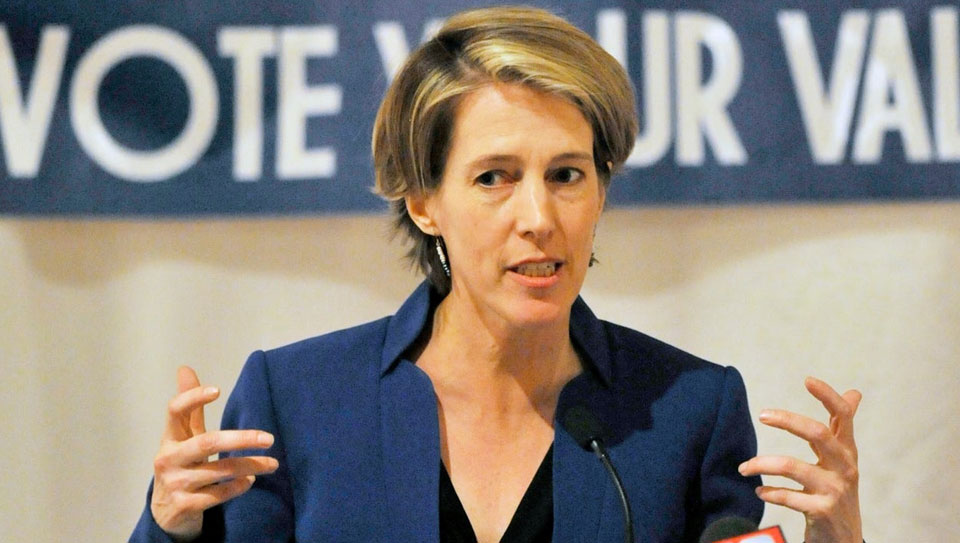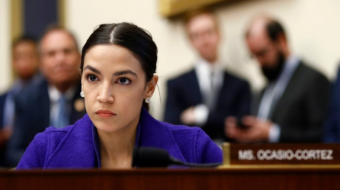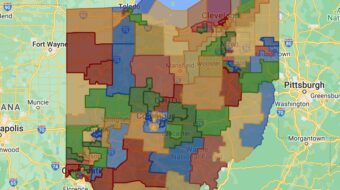
NEW YORK – Labor unions, leaders from the now defunct New Party, powerful non-profit advocacy groups, and community organizations formed the Working Families Party (WFP) of New York in 1998. It has always upheld this labor-community alliance though the strengths of its various pillars have changed.
Every movement for social change experiences major and minor disruptions, internal differences on certain issues, and changes in membership. Member organizations (“affiliates”) can change their leadership, and the new administrations might not be sympathetic to the larger movements to which they belong. For a party that was formed from such diverse sources, such as the WFP, these truths can be magnified.
Unions that help found or were prominent players of the WFP included the United Auto Workers, Communication Workers of America (CWA) District One, Hotel Trades Council, Greater New York PAC Laborers District Council, Retail, Wholesale and Department Store Union (RWDSU), Local 1199 SEIU (Service Employees International Union), Local 32BJ SEIU, United Steelworkers, United Federation of Teachers, Amalgamated Transit Workers Union, Transport Workers Union (TWU), and UNITE Amalgamated NE Joint Board.
It is practically impossible for union leaderships to ignore even halfway decent incumbents running for reelection. Progressive challengers nearly always have a slim chance of success, and going against a sitting governor or other executive officeholder is typically not forgiven after the predicted reelection victory. Moreover, union leaderships are elected, often by large memberships, and if they cannot deliver victories in struggle or legislatively, they can be easily voted out. In contrast, leaderships of non-profit agencies never face the difficulties of elections by their mass memberships. Finally, trade unions have a firm understanding that social change is often glacial in pace, something community organizations comprised of very different memberships might not realize.
Earlier departures of trade unions from the WFP included the teachers and transport workers unions. After intense intraparty discussions over the 2014 and 2018 gubernatorial elections, other unions left.
Fordham University professor of law Zephyr Teachout contested Gov. Andrew Cuomo’s first reelection in 2014, and the WFP was divided over whom to back. After some negotiations, Cuomo pledged to support various progressive policies and to actively campaign against renegade Democratic state senators (the Independent Democratic Conference members) who were caucusing with the Republicans and thus preventing the Democratic Party from exercising its elected majority.
At the WFP’s contentious nominating convention, the compromise to back Cuomo over Teachout won with only 58 percent of the floor vote. Supporting Cuomo over Teachout and soon leaving the WFP were Local 1199 SEIU and the Hotel Trades Councils.
Prior to the elections, the IDC claimed it would end its alliance with the Republicans, who regained their majority after November 2014 but lost it after the arrests of several senators and accompanying special elections. The IDC then reversed course and remained partners with the Republicans, again preventing a Democratic majority.
Over the next two to four years, Cuomo did sign into law some worthy reform legislation but many progressives charged him with dragging his feet. He did not campaign vigorously against the IDC in 2014 and indeed seemed to later hide behind it, blaming it for his own reluctance at more robust reform. After the 2016 legislative elections, the IDC grew its membership and Cuomo ignored calls to help bring it back to the Democratic Party caucus. Furthermore, he was the leading force behind the 2014 founding of the so-called Women’s Equality Party (WEP), deliberately named similarly to the WFP.
Those developments set the stage for yet more disruption within the WFP for Cuomo’s second reelection bid in 2018. Activist actor Cynthia Nixon opposed him, and there was more support within the WFP to finally revenge the governor. There were meetings between leaders of the WFP, its former and then-current affiliated unions, and the governor’s office. At one of these, Gov. Cuomo told all WFP-affiliated trade unions to “lose my number” if they gave money to non-profit and community organizations most critical of the governor. These were Citizen Action, New York Communities for Change, and Make the Road Action—all affiliated with the WFP.
The WFP backed Nixon in the primary. Opposing the Nixon primary endorsement and thus leaving the WFP were the RWDSU and the two largest union affiliates: Local 32BJ SEIU and CWA District One. Cuomo won that round, and the WFP, to retain its ballot status, had no choice but to support Cuomo in the general election. This was a tactical necessity that was probably lost on many WFP-sympathetic voters.
It is too easy for progressive individuals not connected to the union movement to trash the departing unions. Likewise, left or progressive organizations that spend most of their time outside of today’s real, existing unions might be too quick to criticize.
Aware of the tactical difficulties facing unions, the WFP has never spoken in hostile terms after member union departures. For example, after 2018, then WFP State Director Bill Lipton said he respected the unions’ decisions and acknowledged they were in a “tight spot.” He added, “The Working Families Party has always fought for the rights of unions and for all working families and that will never change.” He continued, “We will stand up for workers, tenants, commuters, homeowners, immigrants, people of color, students—and every other New Yorker who needs a voice. We will continue to fight for a New York that works for all working families.”
Important unions remain. Among them are the United Auto Workers PAC Council, New York State Nurses Association, New York Professional Nurses, New York State United Teachers, and the Profession Staff Congress. Smaller Teamsters locals and the quite militant members from the Laundry, Distribution and Food Service Joint Board are also present.
It is true that non-profit organizations and community groups are playing an increased role within the WFP. ACORN (the Association of Community Organizations for Reform Now) and Citizen Action helped cofound the WFP. ACORN’S successor organization, New York Communities for Change, and the latter group are still prominent. So is Community Voices Heard Power, Make the Road, Metropolitan Council on Housing, New York Political Action Network, and VOCAL-NY Action Fund as well as others.
______________________________________
From 1938 until 2020, a third party in New York State could obtain ballot status if it won at least 50,000 votes in a gubernatorial election. Meaning, in the four years following a successful campaign, the third party could run candidates on its party line and not have to gather 15,000 valid signatures for its name to simply appear on the ballot.
Obtaining 50,000 votes was made easier because New York is one of eight states that allows fusion voting. (California is a ninth, but only for presidential elections.) Fusion means that more than one party can nominate the same candidate for office. Seemingly odd today, it was common throughout the country until the late 1800s.
State ballots list each party, so voters can pick a candidate on any line under which he or she is running. For example, in 1998, Peter Vallone, Sr., ran for governor and won over 1.5 million votes on the Democratic line and 51,325 votes on the WFP line. The two were combined for his total of 1,570,317, but the WFP had credit for its gathering of over 50,000 votes. Thus, the new WFP won ballot status for the next four years.
Third parties can run their own candidates instead of fusing with others but risk becoming spoilers. Some parties tactically accept this dilemma and fuse with the major party that is ideologically closest. However, other third parties are blind to the spoiler possibility and instead barrel ahead “on principle.” The Green Party is the strongest example.
Most trade unions and the best of democratic movements seem to separate goals from tactics. Progressive and liberal lawmakers legislatively improve the positions of unions and the lives of the working class, all people facing racial and national discrimination, all women, LGBTQ communities. From this view, how these legislators get into office is a tactical issue, especially given the restrictions of the two-party system. In areas in which third parties are an unviable option, running as a minor party sounds heroic but arguably wastes valuable energy, time, and resources and might throw the election to the opposite side of the spectrum.
Gov. Cuomo was outraged by the 2014 and 2018 primary challenges. Also, the WFP, other progressive organizations, and key labor unions routed the IDC senators in 2018. All of this seemed to push Cuomo over the edge in his hatred of his opponents, especially the WFP. In late 2019, the legislature had agreed to a commission to sort out publicly financed campaigns. Commissioner Jay Jacobs, a Cuomo ally and chairman of the New York State Democratic Party, led efforts to link that reform with much tougher ballot status requirements. The state’s Supreme Court struck down the law, but the legislature voted for the same restrictions in the state budget in April 2020 amidst the panic of coronavirus.
Under the new law, public financing was progressively expanded. However, ballot status regulations went in the opposite direction. Third parties now had to win 130,000 votes in gubernatorial as well as presidential elections. If 2 percent of all votes cast was greater than 130,000, then the threshold would be the 2 percent figure. The Working Families and other third parties sued, but without success.
______________________________________
Back to 1998. Five minor parties had ballot status. Of these, the Independence Party (formed in the early 1990s) outperformed all others when running their own candidates (instead of endorsing either the Democrats or Republicans). Politically, it has swung wildly depending on internal power struggles.
The Conservative Party was founded in 1962 based on far-right dissatisfaction with the state Republican Party, which at the time was more liberal than the nation’s Southern Democrats. Though it ran its own candidates in its early years, Conservatives subsequently cross-endorsed Republicans. The Right to Life Party was founded in 1970. It won ballot status in 1978 and maintained it until the 2002 gubernatorial election, never fusing with Republican candidates for the governor’s office.
The Liberal Party reached back to 1944 as an anti-Communist alternative to the American Labor Party. It continued as a right-wing social-democratic party until the 1990s, when it further deteriorated and backed Rudy Giuliani for mayor and Betsy McCaughey, conservative critic of President Bill Clinton’s health plan, for governor.
The gubernatorial election graphs below show the third parties by order of votes. Since the Democrats and Republicans are excluded, each graph shows the third, fourth, fifth, etc., line on the ballot for the following four years.
______________________________________
In its infancy, the WFP cross-endorsed Democrat Peter Vallone for governor in November 1998. Since it gathered over 50,000 votes (51,325), it won ballot status for the next four years. So did the Green Party (52,533 votes), which ran its own candidate. (It has never fused with the Democrats.)

Four minor parties maintained their ballot status—the Independence, Conservative, Liberal, and Right to Life parties. Of these, only the Conservatives cross-endorsed (Republican Gov. George Pataki’s first reelection).
The graphs show each party’s percentage of the total vote below the party name. It wasn’t relevant in 1998 but would become so in 2020 when the qualifying rules changed (and winning 2 percent became a possible hurdle).
______________________________________

Four years later, parties that cross-endorsed were again the WFP (Democrat Carl McCall) and Conservatives (Republican Gov. Pataki’s second reelection). A power struggle within the Independence Party had one side favoring Pataki but the other side, which favored Rochester billionaire Tom Golisano, took the day. The Right to Life, Green, and Liberal parties all fell below the 50,000-vote threshold. The Green Party would come back in 2010, but the RTL and Liberal parties never regained significance.
______________________________________

In 2006, the same three parties maintained ballot status. The Independence Party, after more internal fighting, fused with the Democrats (Eliot Spitzer), as did the WFP. The Conservatives again cross-endorsed the Republican (John Faso). The vote total for the Independence line plunged more than 460,000 while the WFP gained considerable ground on the Conservatives.
______________________________________

Four years later, the Green Party regained ballot status while the Libertarian Party (LP) nearly won it. The Independence Party fell to fifth place on the ballot (third on the graph) behind the advancing Conservatives and WFP.
This time, the Independence Party fused with the Republican candidate (the bombastic Carl Paladino), as did the Conservatives, again. The WFP fused with the Democrats (Andrew Cuomo), while the Greens, Libertarians, and all other parties ran their own candidates.
______________________________________

As mentioned above, different sides within the WFP reached a compromise and backed Democrat Gov. Cuomo in 2014. So the WFP fused with the Democrats. The Conservatives (backing the Republican candidate Rob Astorino) again drew the most minor party votes. The Green vote rose dramatically, and the Independence Party switched back to cross endorsing the Democrats. Its considerable drop in vote is decent evidence of its right-of-center voting base. The WFP vote fell by roughly 30,000 but its share of the total vote stayed at 3.3 percent.
More drama came from the Women’s Equality Party, a hostile creation of Cuomo’s, given the WFP compromise. There was now a WEP and a WFP line, both endorsing him, and the WEP won over 50,000 votes in the ploy. On a line created by Astorino and fusing with the Republicans, the Stop Common Core Party also won ballot status. The Greens did not cross endorse.
______________________________________

Four years later, again competition against Cuomo was followed by an offensive against the WFP. Actor Cynthia Nixon was running, and there was movement within the WFP to pick her. After endorsing her in the primary, the WFP fused with the Democrats to pick Cuomo in the general election.
The Conservatives again did the best, maintaining their 250-something thousand total (though their percent of the overall vote fell from 6.6 percent in 2014 to 4.2 percent). The WFP overtook the Green party though its number and share of votes declined from 2014. The Libertarians achieved ballot status for the first time, as did a new party, the Save America Movement. Failing to win the necessary 50,000 votes were the WEP and the now-named Reform Party (previously known as Stop Common Core).
The WFP, Independence Party, and WEP fused with the Democrats and supported Gov. Cuomo. The Conservatives and Reform parties fused with the Republicans (Marc Molinaro). The Greens, Libertarians, and SAM ran separate candidates. This was the last qualifying election under the old rule—gather 50,000 votes for a candidate for governor, enjoy ballot status for the next four years.

______________________________________
Presidential elections were not relevant for third-party ballot status until 2020. Regardless, it is interesting to review them. Gov. Cuomo must have studied the old returns as he sought ways to eliminate the WFP.
The black dotted line in the presidential election graphs, at 50,000, is the old number of required votes, needed only in gubernatorial elections. These graphs’ red line at 130,000 shows the new threshold, needed in each gubernatorial and presidential election beginning in 2020. If 2 percent of the total vote is larger than 130,000, then the 2 percent figure is the threshold. Parties appear according to their ballot position. (This was the order of their votes from the gubernatorial election two years prior.)
In 2000, only two parties won more than 130,000 votes and 2 percent of the total vote: the Conservatives and the Greens. Two parties fell below the 50,000 vote barrier: Independence and RTL. Liberals and the WFP won more than the old hurdle but less than the 2020 mark.
The Conservatives cross-endorsed the Republican (George W. Bush), Liberals and the WFP fused with the Democrat (Vice President Al Gore), and the Independence, RTL, and Green parties ran their own candidates.
______________________________________

Only three third parties qualified to be on the 2004 ballot. The Conservatives won more than 130,000 votes and 2 percent of the vote total. The WFP surpassed 130,000 votes, but their 133,525 was only 1.8% of the total. The Independence Party outdid the old but not the 2020 standards.
The Conservatives endorsed the Republican (Bush’s reelection) and the WFP backed the Democrat (Sen. John Kerry), but the Independence Party did not fuse.
______________________________________

Four years later, the same three third parties with ballot status. The WFP cross-endorsed Democrat Barack Obama while the Conservative and Independence parties fused with the Republicans (Sen. John McCain). All three parties passed the 2020 barriers of number of votes won and percent of total votes.
______________________________________

Though it had ballot status, the Independence Party did not run its own or fuse with another candidate in 2012. The Conservatives (backing Republican Mitt Romney) and the WFP (endorsing Pres. Obama’s reelection) crossed the 2020 obstacles. The Green Party, regaining ballot status two years prior, ran its own candidate but did not surpass the then-existing 50,000 threshold.
______________________________________

A crowded ballot in 2016 due to the chaos in the 2014 gubernatorial election. The Conservatives, backing Donald Trump, towered above all others. The WFP cross-endorsed Sec. Hillary Clinton. Like in 2004, its votes were greater than the future 130,000 barrier (140,043), but still below 2 percent of the total. The WEP also fused with the Democrats but its 36,292 votes were under the 50,000 mark.
The Independence and Libertarian parties endorsed Gary Johnson, and both fell short of the future 130,000 threshold. The Stop Common Core Party become the unaffiliated Reform Party, was sued by the national party, became affiliated, witnessed a hostile takeover, and then unaffiliated from the national. It did not appear on the 2016 presidential ballot.
______________________________________

The presidential election in 2020 was the first test of the new ballot regulations. The Conservatives fused with Republican Donald Trump while the WFP cross-endorsed the Biden-Harris Democratic ticket. The Greens, LP, and Independence Party ran their own candidates.
Only two parties won enough votes to stay on the ballot for the next two years. The WFP had its best showing ever and won nearly 5 percent of the total vote, to be listed as the third party on the state ballots. By backing Trump’s reelection, the Conservatives had their strongest finish since the 1998 governor’s race. Coming up short were the other parties with ballot status—the Libertarian, Green, and Independence parties. The SAM party did not run a presidential candidate.
Next year will be the first test for third parties to gather the higher required vote total in a gubernatorial election. It will be a midterm election, and those are rare wins for the major party that holds the presidency. Meaning, the Conservative Party might have an easy path to hold its state ballot status. Conversely, the WFP might have a rough time doing the same.
On the other hand, Gov. Cuomo resigned in disgrace due to multiple sexual harassment accusations. Had he clung to power, the WFP would have either been practically forced to cross endorse or face playing a spoiler role by not fusing but risk throwing the election to a Republican. One truth is certain: losing ballot status puts a third party in a completely different situation.












Comments